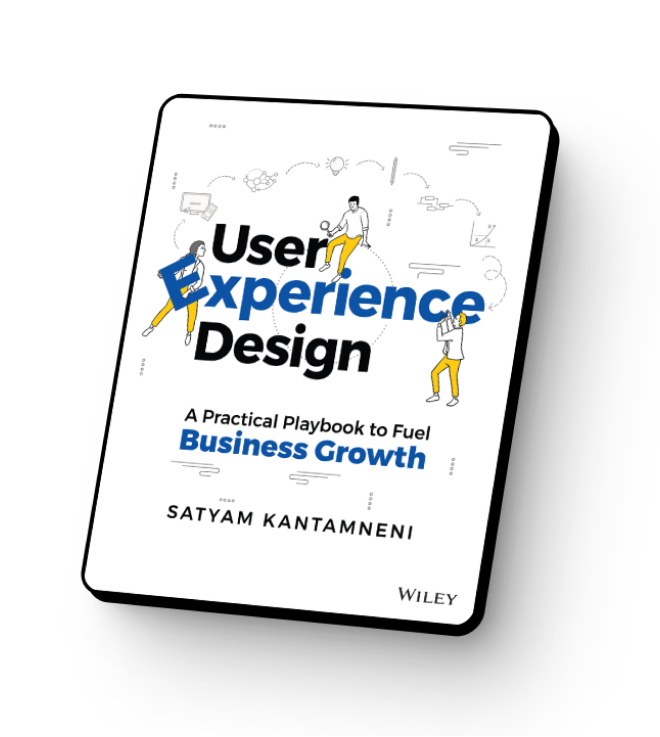In a world where experience-led growth is imperative, a CXO is no longer a luxury — it’s a necessity.
Experience-led growth is the new it strategy as today’s market-leading products center everything around their users — and for good reason. Study after study shows those who embrace a user-centric mindset outperform their competitors in revenue growth, user satisfaction, and user retention.
Think about today’s top brands: Apple, Tesla, Shopify. What do they all have in common? They put the user experience above everything else and posses the market dominance to prove it.
Therefore, having a Chief Experience Officer (CXO) is no longer a nice-to-have. It’s a need-to-have.
A CXO in the C-suite provides a holistic view of the user’s journey, from the very first touchpoint to cultivating the user’s loyalty and ensuring a seamless and satisfying experience throughout. They break down silos among teams and set the vision for the end-to-end user experience at every touchpoint.
Here’s what you need to know about this fresh — and vital — position.
A Chief Experience Officer (CXO) Enhances UX at Every Touchpoint
Users interact with products in increasingly nuanced ways. As such, their expectations soar with every streamlined process and moment of delight as they click, scroll, and swipe through your product.
So who is in charge of ensuring their journey is the best it can be?
(Hint: It’s not the Chief Customer Officer or Chief Product Officer. Nor is it a functional role.)
It’s the CXO, or Chief Experience Officer.
The CXO is a relatively new but increasingly essential executive position. Their job? To enhance the user experience and impact every touchpoint from the moment a potential user encounters the product to the moment a user signs off for the last time (and in some cases, beyond).
From product development to marketing and user support, the CXO orchestrates the user experience across all facets of your product, making sure that their needs are at the forefront of all decisions. Like a dedicated user advocate, the CXO makes sure all decisions made lead back to the benefit of the user.
CXOs Choreograph a Symphony of Satisfaction
Think about your favorite productivity tool. Now think about how many different positions at your company use the same tool. Each role uses it differently depending on their needs, motivations, schedules, and priorities.
Now imagine if it was designed with one role in mind, like an administrative assistant. That singular experience wouldn’t account for all the use cases that each unique role would need it for or benefit from, like a UX researcher, UI designer, or product owner. This lack of thoughtful experience design would alienate and frustrate so many users that it would become obsolete and your company would cease to use it.
If that productivity tool had a CXO, however, they would orchestrate all the different users, systems, and contexts to create a productivity tool that sings. By providing a consistent, superior user experience, a CXO could dynamically drive user loyalty within your organization and add to their revenue growth.
Consider PayPal, the veritable titan of online payments. Recently, they appointed a Chief Experience Officer (CXO) with the objective of enhancing user satisfaction. This move underscores PayPal’s determination to elevate user satisfaction from good to remarkable.
With the new CXO in place, PayPal aims to create an effortlessly enjoyable journey for all users. No longer are they just open for your business – they’re crafting every moment to ensure it’s a positively unbeatable one.
A CXO is a Different Executive Position
Understanding the differences between a CXO and other executive roles like the CPO (Chief Product Officer) or CCO (Chief Customer Officer) is critical in defining the responsibility boundaries within your organization.
It’s true that all three roles seem similar, but they each have a specialized focus. The CPO centers around product development and innovation, while the CCO’s primary role is to oversee customer satisfaction and loyalty.
A CXO, on the other hand, makes sure that every business and design decision considers the user’s perspective. It’s an executive leader responsible for roadmapping every user’s experience, measures that experience, has a vision for the user’s experience, and can engage, collaborate and share that within the leadership team.
Qualities to Look for in a Game-Changing CXO
As you start thinking about adding a CXO to your team, you need to know what makes an effective one. Since CXO is a nascent role, their responsibilities seem ambiguous.
A CXO who will bring the most value should possess these key qualities.
- Strategic Vision: An exceptional CXO needs to have knowledge and understanding of your business goals and how to align them with user needs.
- User Empathy: They have a thorough grasp of the user’s mindset, anticipating needs, preferences, and behaviors. They have a unique ability to put themselves in another’s shoes.
- Strong Communication: Effective communication skills are a must. They should be able to convey user needs and experiences to the rest of the team, making sure that the user perspective is always considered.
- Business Acumen: A great CXO understands your organization’s business model and can balance user needs with business objectives.
- Innovative Mindset: They are always looking for innovative ways to enhance user experience, keeping your organization ahead of the curve.
Can you think of someone who fits the bill? (We’re pretty sure Bezos and Branson are busy.)
The Time to Hire a CXO is Now for Experience-Led Products
Like jockeying for the front of the line outside the Apple Store, it’s an increasingly competitive landscape out there. Your UX must do everything it can to position itself at the front of the line. Otherwise, users will give up and move on — or not even bother getting in line in the first place.
A CXO can be the high-value executive leader who strategizes the right moves to get your product and people where they need to be. By understanding the role and qualities of an ideal CXO, you can know what to look for as you start to explore how that expert would fit into your organization. Finally, with a CXO informing your decision making, you’ll fully adopt a user-centric approach and accelerate toward experience-led growth.


